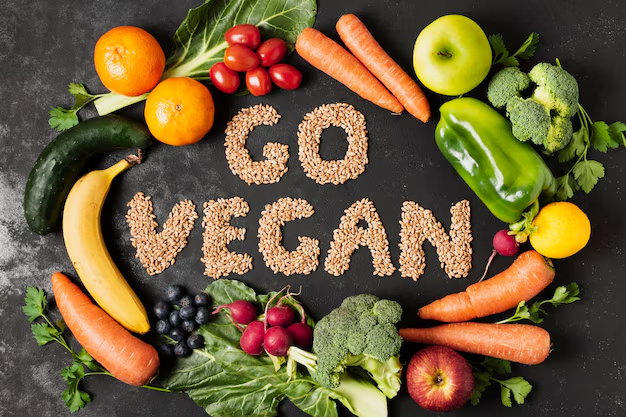Are you a vegan seeking a healthier, more fulfilling way to nourish your body? Have you ever wondered if the paleo diet could work for you, even as a vegan? Our comprehensive guide reveals the secrets to combining the best of both worlds. Discover the difference between paleo and vegan diets, explore a treasure trove of free vegan paleo recipes, and learn how to incorporate plant-based protein into your meals.
This article will delve into the fundamental principles of the Plant-Based Paleo Diet, providing you with actionable insights and a delicious recipe to kickstart your journey towards a healthier, more sustainable lifestyle.
Understanding the Plant-Based Paleo Diet
The Plant-Based Paleo Diet seamlessly combines the foundational principles of the Paleo diet and veganism. By adhering to a diet rich in whole, unprocessed foods, you’ll be nourishing your body with the essential nutrients it needs.
Key Components of the Plant-Based Paleo Diet:
- Abundant Plant Foods: Prioritize vegetables, fruits, nuts, seeds, and plant-based proteins.
- Elimination of Animal Products: Avoid all animal-derived foods, including meat, poultry, fish, eggs, and dairy.
- Grain-Free and Legume-Free: Steer clear of grains (like wheat, rice, and corn) and legumes (like beans, lentils, and peas).
- Minimal Refined Sugars: Limit your intake of refined sugars and opt for natural sweeteners like honey or maple syrup in moderation.
By embracing these principles, you’ll be supporting optimal health, reducing inflammation, and promoting a thriving gut microbiome.

Benefits of a Plant-Based Paleo Approach
Embracing a Plant-Based Paleo Diet offers numerous advantages for both your health and the environment:
- Nutrient-Rich Diet: By prioritizing whole, plant-based foods, you’ll be fueling your body with a diverse array of vitamins, minerals, and antioxidants.
- Environmental Stewardship: Reducing your consumption of animal products significantly lessens the environmental impact associated with animal agriculture.
- Optimized Digestive Health: The abundance of fiber-rich plant foods in this diet can promote a healthy gut microbiome and improve digestion.
- Effective Weight Management: The high nutrient density and low calorie content of plant-based foods naturally support weight control without feeling deprived.
By adopting a Plant-Based Paleo lifestyle, you can experience the transformative power of nourishing your body while contributing to a healthier planet.

Key Foods and Ingredients
A Plant-Based Paleo Diet revolves around a diverse resources nutrient-dense foods:
- Vibrant Produce: Fill your plate with a colorful assortment of vegetables and fruits. Experiment with different varieties and cooking methods to keep things interesting.
- Nutrient-Packed Nuts and Seeds: These tiny powerhouses offer a rich source of healthy fats, protein, and fiber. Incorporate them into your meals and snacks.
- Plant-Based Protein Powerhouses: Elevate your dishes with plant-based proteins like tempeh, spirulina, and hemp seeds. These options provide complete protein without the need for animal products.
- Healthy Fats: Nourish your body with healthy fats from avocados, coconut, and olive oil. These fats contribute to overall health and satiety.
By focusing on these key ingredients, you’ll be creating delicious and nourishing meals that align with the principles of the Plant-Based Paleo Diet.

Foods to Avoid
To ensure optimal results and align with the core principles of the Plant-Based Paleo Diet, it’s essential to avoid the following:
- Grains and Legumes: While nutritious, grains like wheat, rice, and corn, as well as legumes like beans, lentils, and peas, are excluded due to the Paleo diet’s focus on whole, unprocessed foods.
- Dairy Products: Both veganism and Paleo principles dictate the avoidance of dairy products, including milk, cheese, and yogurt.
- Processed Foods and Sugars: The Plant-Based Paleo Diet emphasizes whole, unprocessed foods. Steer clear of highly processed foods and excessive added sugars.
By making a conscious effort to eliminate these foods from your diet, you’ll be better equipped to reap the full benefits of this healthy and sustainable approach to nutrition.

Benefits of the 8-Week Self-Paced Gut Healing Programme
The 8-Week Self-Paced Gut Healing Programme is a carefully crafted journey designed to restore your digestive health and promote overall well-being. Heal and optimize your gut function for improved digestion, nutrient absorption, and overall well-being. Experience relief from digestive symptoms, increased energy, and a stronger immune system. Learn practical strategies to maintain long-term digestive health and confidently navigate your health journey.
This self-paced programme offers flexibility and convenience, allowing you to progress at your own pace while receiving expert guidance and support.

Plant-Based Paleo Smoothie Bowl
Ingredients:
- 1 cup mixed frozen berries (choose your favorites!)
- 1/2 avocado
- 1/4 cup coconut cream
- 1 tablespoon chia seeds
- 1 tablespoon flaxseed meal
- A splash of almond milk (adjust for desired consistency)
Toppings:
- sliced almonds
- coconut flakes
- fresh berries
- a drizzle of honey or maple syrup (optional)
Instructions:
- Combine the frozen berries, avocado, coconut cream, chia seeds, flaxseed meal, and almond milk in a high-speed blender. Blend until smooth and creamy.
- Pour the smoothie into a bowl and top with your favorite toppings, such as sliced almonds, coconut flakes, fresh berries, and a drizzle of honey or maple syrup for a touch of sweetness.
Tip: For a thicker smoothie, add more chia seeds or flaxseed meal. You can also experiment with different combinations of fruits and vegetables to create your own unique smoothie creations.

Thriving on the Plant-Based Paleo Diet: A Journey of Variety and Creativity
To truly flourish on the Plant-Based Paleo Diet, variety and creativity of fresh foods are essential. Explore different plant-based proteins and fats to discover the combinations that fuel your body and taste buds.
Key Tips for Thriving:
- Embrace Variety: Experiment with a wide range of plant-based foods to ensure you’re getting a diverse array of nutrients.
- Get Creative: Don’t be afraid to try new recipes and cooking techniques.
- Listen to Your Body: Pay attention to how different foods make you feel and adjust your diet accordingly.
- Stay Informed: Keep yourself informed about nutritional content and consult with a nutrition gut specialist or registered dietitian if needed.
By incorporating these strategies into your Plant-Based Paleo journey, you’ll be well on your way to achieving optimal health and well-being.
FAQs
What is a paleo vegan diet?
A paleo vegan diet combines the principles of the paleo diet (which focuses on whole, unprocessed foods) with a vegan diet (which excludes all animal products). It emphasizes fruits, vegetables, nuts, seeds, and whole grains.
What is a vegan plant-based diet?
A vegan plant-based diet is a diet that excludes all animal products, including meat, dairy, eggs, and any ingredients derived from animals. It focuses on plant-based foods like fruits, vegetables, whole grains, legumes, nuts, and seeds.
What are the best paleo options?
The best paleo options include fruits, vegetables, nuts and seeds, protein sources, and healthy fats.
What are the rules for the paleo diet?
The paleo diet generally avoid grains (wheat, rice, corn), legumes, dairy, processed foods, added sugars, and unhealthy fats, focus on whole, unprocessed foods, lean proteins, fruits, vegetables, nuts, and seeds, and enjoy healthy fats and starchy vegetables in moderation.
By prioritizing whole, plant-based foods, you’ll be nourishing your body, supporting environmental sustainability, and embarking on a journey towards optimal health with these cookbooks.
As you explore the vast array of options available, you’ll find countless ways to create delicious and sustainable meals that support your overall well-being.




